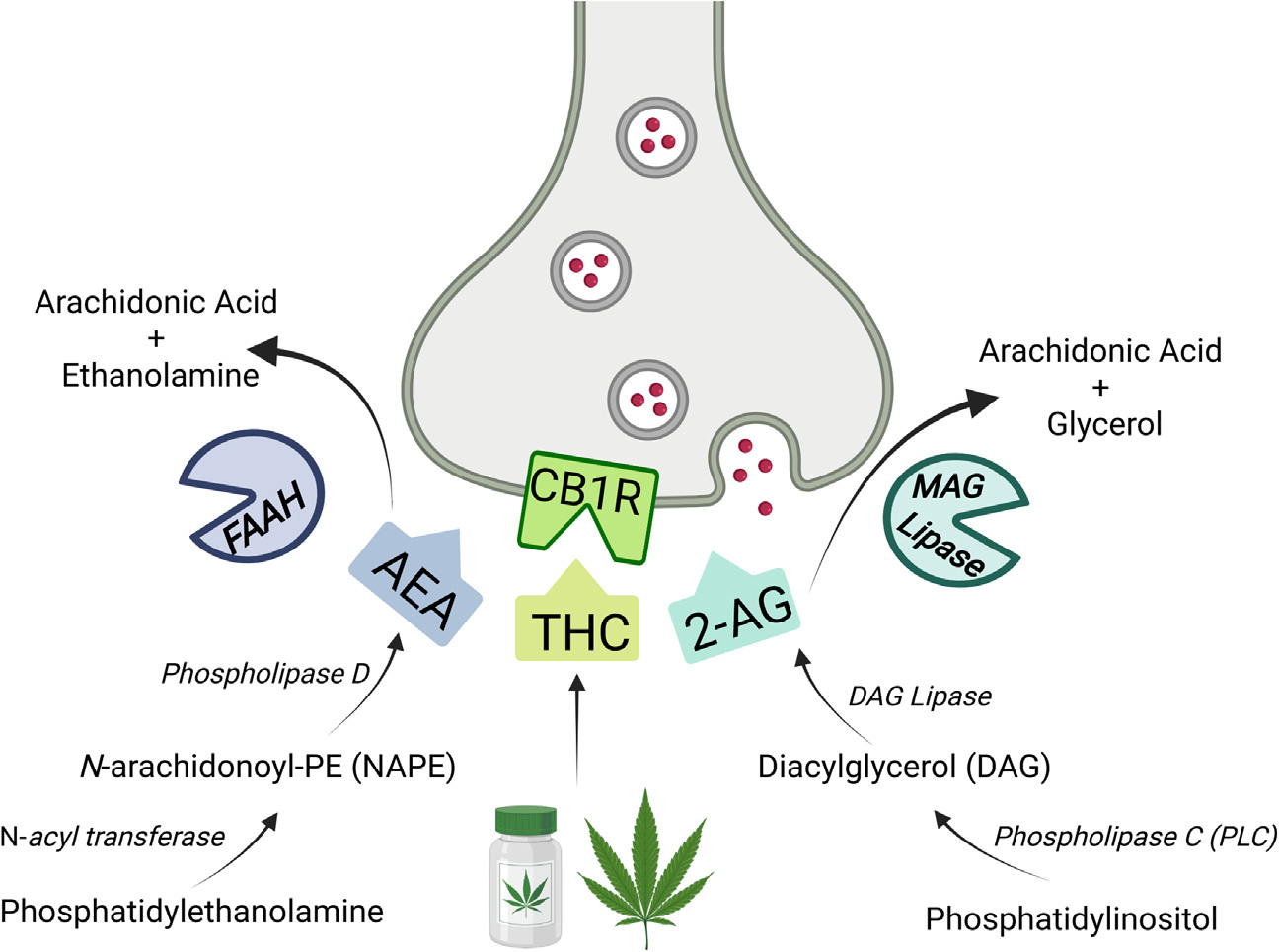Figure 1.

Overview of therapeutic targets to enhance cannabinoid signaling. Currently, there are three distinct ways to modulate cannabinoid signaling via the CB1R in humans. The primary psychoactive ingredient of cannabis, THC, can activate CB1Rs and has been used in humans extensively for medical and nonmedical purposes. More recently, enzyme inhibition approaches have been used to modulate endogenous cannabinoid function. Inhibition of FAAH can increase AEA availability, while inhibition of MAGL can similarly promote 2-AG. All three methods appear to influence stress and fear learning, although dose and route of administration may be critical. Currently, THC and FAAH inhibition are each being used together with prolonged exposure therapy to treat posttraumatic stress disorder in separate clinical trials. MAGL inhibition is currently being evaluated on neuroimaging biomarkers in posttraumatic stress disorder population, as well. Future work will hopefully highlight the shared and unique features of each pharmacological target in this patient population. Figure created with BioRender.com. 2-AG, 2-arachidonoyl glycerol; AEA, anandamide; CB1R, CB1 receptor; FAAH, fatty acid amide hydrolase; MAGL, monoacylglycerol lipase; THC, Δ9-tetrahydrocannabinol.
